Introduction: From Fabric Bolt to Finished Product
Curtains are more than just functional window coverings; they are central elements of interior design that dictate the ambiance of a room. Behind every beautifully draped curtain is a complex manufacturing process that transforms raw fabric into a finished product. For business owners, manufacturers, and industry newcomers, understanding this process is crucial for optimizing production, controlling quality, and improving profitability.
A common question arises: "How many steps and machines are needed to make curtains?" The answer is not a single number, as it depends on the curtain type (e.g., simple panels, pinch pleat, eyelet, roller blinds). However, the core manufacturing workflow follows a consistent sequence of operations, each requiring specialized machinery.
This in-depth guide will dissect the modern curtain manufacturing process, detailing every critical step and the essential machines that drive efficiency and quality. Furthermore, we will explore how automation, provided by specialized industry leaders like Dongguan Ridong Intelligent Equipment Co., Ltd., is revolutionizing this age-old craft, enabling manufacturers to scale their operations and compete in the global market.
Section 1: The Foundational Steps in Curtain Manufacturing
The journey of a curtain can be broken down into three main phases: Pre-Production, Production, and Finishing. Each phase contains several steps.
Phase 1: Pre-Production (Planning & Preparation)
1. Design and Prototyping: This is the creative stage where designs are conceptualized, including fabric choice, pleat style, length, and lining requirements. A sample is often made to confirm the look and functionality.
2. Fabric Sourcing and Inspection: Bulk fabric is procured. Upon arrival, the material is unrolled and inspected for flaws, color consistency, and printing errors.
3. Spreading and Marking: The fabric is laid out in multiple layers on a large cutting table. Traditionally, patterns were marked manually, but modern operations use digital files to guide automated cutters.
Phase 2: Production (Fabrication & Assembly)
This is the most machinery-intensive phase.
4. Cutting: The fabric is cut into the required panels and components according to the design specifications.
5. Seaming and Hemming: The main curtain panels are sewn together if necessary, and hems are created at the bottom, top, and sides.
6. Pleating/Heading Formation: This step creates the decorative top of the curtain, such as pinch pleats, grommets, or tab tops.
7. Lining and Interlining Attachment: If required, lining fabric is cut and attached to the main curtain panel to provide opacity, insulation, or a better drape.
8. Wave/Fold Setting (For certain curtain types): For curtains designed to hang in specific, consistent waves, the fabric is thermally set to hold this shape permanently.
Phase 3: Finishing (Quality Control & Packaging)
9. Quality Control: Every curtain is inspected for sewing defects, consistent measurements, and overall appearance.
10. Ironing and Steaming: The finished product is pressed to remove wrinkles and ensure a crisp, retail-ready presentation.
11. Packaging and Labeling: Curtains are folded, tagged, and packaged according to customer or retail specifications.
Section 2: The Essential Machines in a Modern Curtain Factory
The efficiency, consistency, and scale of production are directly dependent on the machinery used. Here are the core machines needed in a modern curtain manufacturing facility.
Machine 1: Fabric Cutting Machines
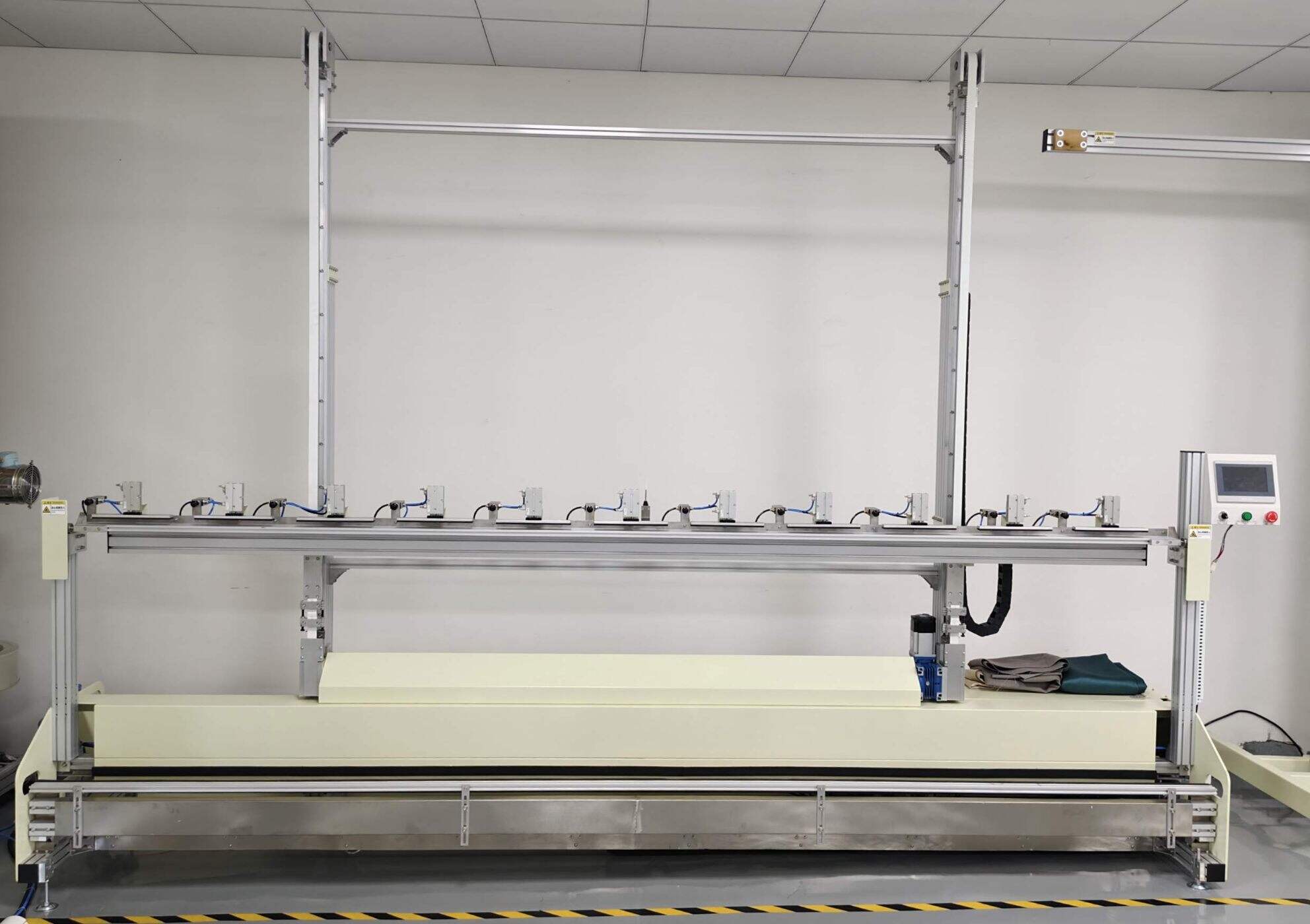
The first major mechanical step is cutting. Accuracy here is paramount to avoid material waste.
Manual Cutting: In small workshops, this is done with rotary cutters on a table. It is labor-intensive and prone to human error.
Automated CNC Cutting Machines: These are the industry standard for serious manufacturers. A computer-controlled gantry moves a cutting tool (oscillating knife, ultrasonic horn, etc.) over the fabric, executing cuts with perfect precision based on a digital file. This minimizes waste and ensures every panel is identical.
Ultrasonic Fabric Welding and Cutting Machines: Particularly for synthetic fabrics like polyester used in roller blinds or blackout linings, ultrasonic machines use high-frequency vibrations to cut and simultaneously seal the fabric edge. This prevents fraying entirely, eliminating the need for hemming on certain edges and creating a superior product.
Machine 2: Industrial Sewing Machines
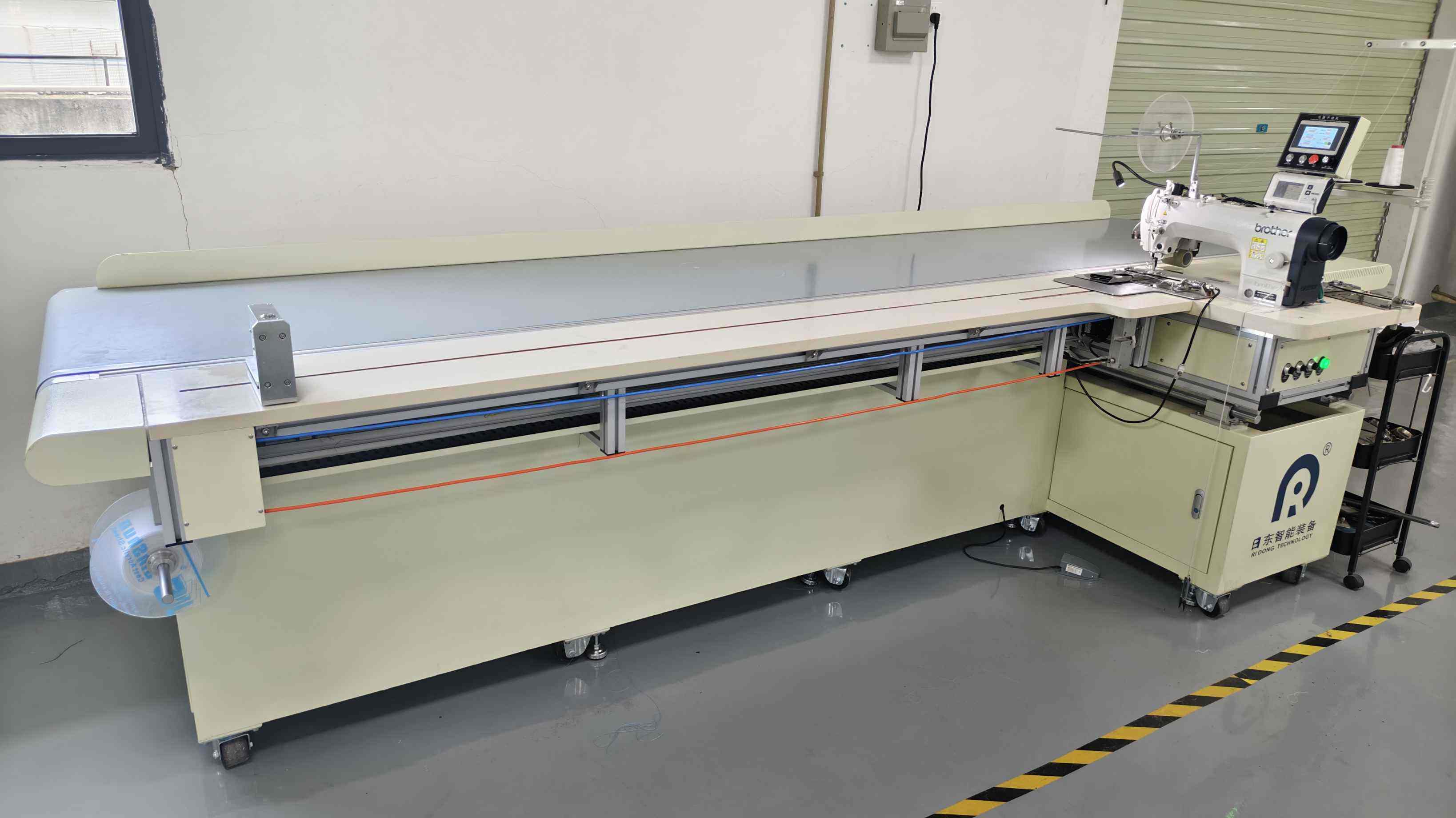
Sewing is the heart of curtain assembly. Different stitches and operations require different machines.
Single-Needle Lockstitch Sewing Machines: The workhorse for most seaming and hemming operations.
Overlock (Serger) Machines: Used to finish the raw edges of the fabric inside the curtain, preventing fraying and giving a professional look.
Specialized Curtain Sewing Machines: These are advanced machines designed for specific tasks. For example, Dongguan Ridong offers machines with traveling heads that automatically sew perfect, consistent hems and overlaps for heavy fabrics like those used in awnings and outdoor shades, drastically increasing speed over manual guiding.
Machine 3: Pleating and Heading Machines
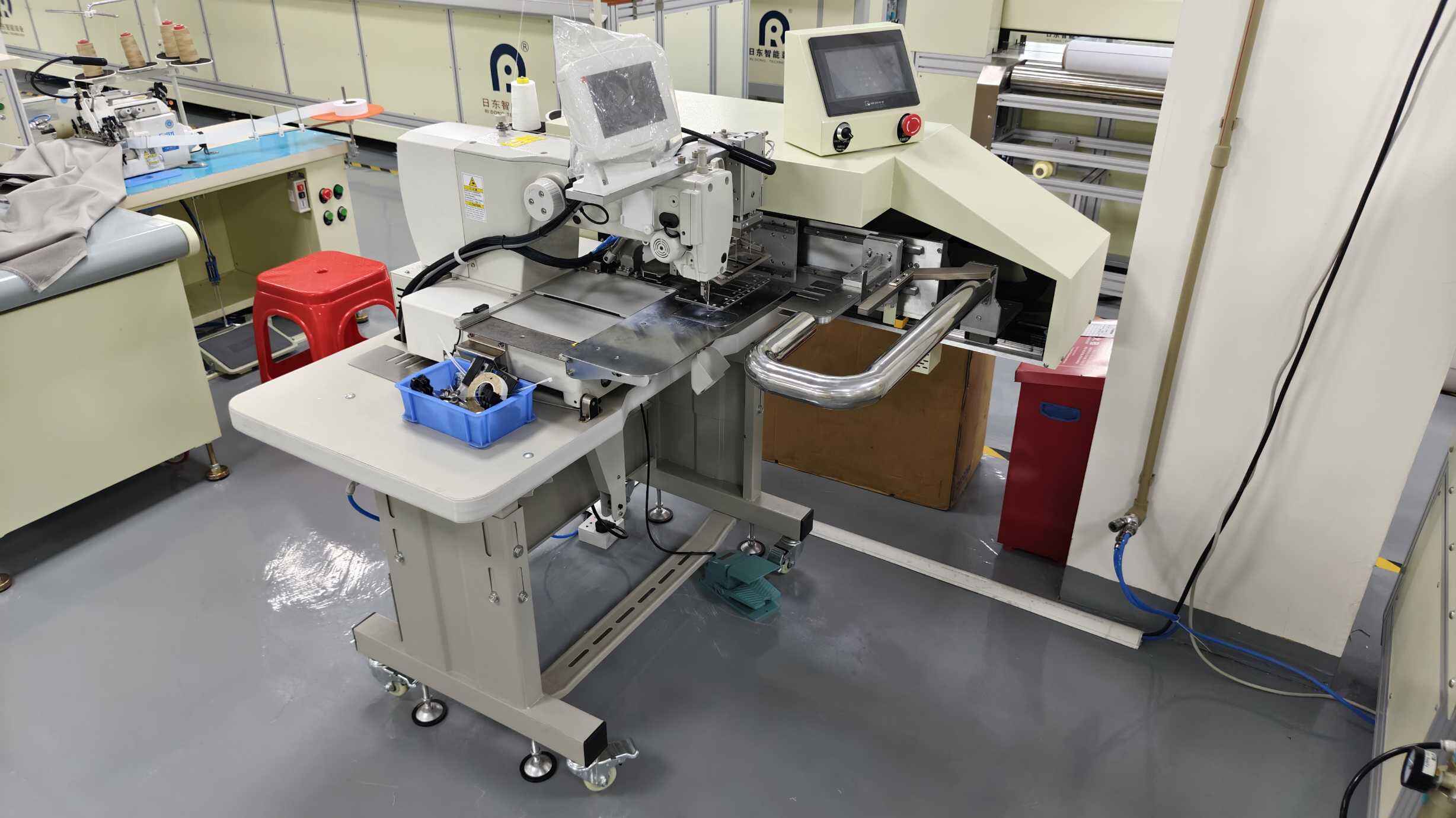
Creating uniform pleats manually is incredibly time-consuming.
Pinch Pleaters: These machines automate the folding and tacking of fabric to create consistent pinch pleats.
Grommet/Eyelet Machines: These machines punch holes in the fabric and then press a metal or plastic grommet ring into place, creating a clean, durable hole for the curtain rod.
Machine 4: Curtain Vertical Heat Setting Machine
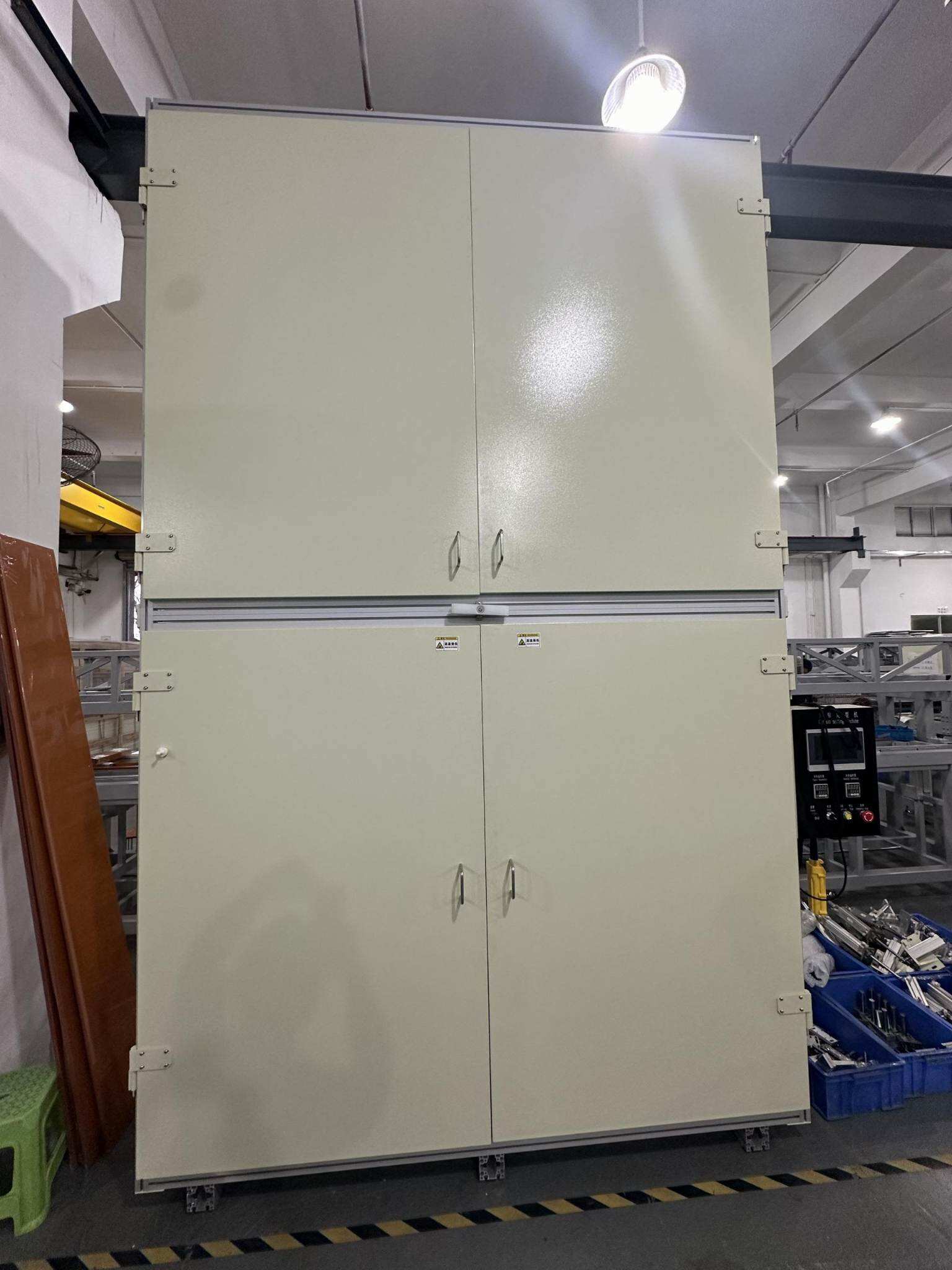
This is a game-changer for high-quality curtain production. This specialized equipment is used to shape and permanently set the curtain's wave or fold pattern.
How it Works: The curtain is draped over a form that has the desired wave shape. The machine then applies automated, rapid, and uniform heat to the fabric. This thermal process "sets" the molecular structure of the fabric (especially synthetics and blends), locking in the shape.
The Key Benefit: The beautiful, elegant wave shape is permanent. It will maintain its form even after repeated washing, which is a significant value proposition for the end-customer. This machine is essential for producing consistent, premium curtain products.
Machine 5: Finishing Equipment
Industrial Steam Tables and Pressing Machines: These large tables with overhead steam generators allow for the efficient pressing of entire curtains without creating shine or damaging the fabric.
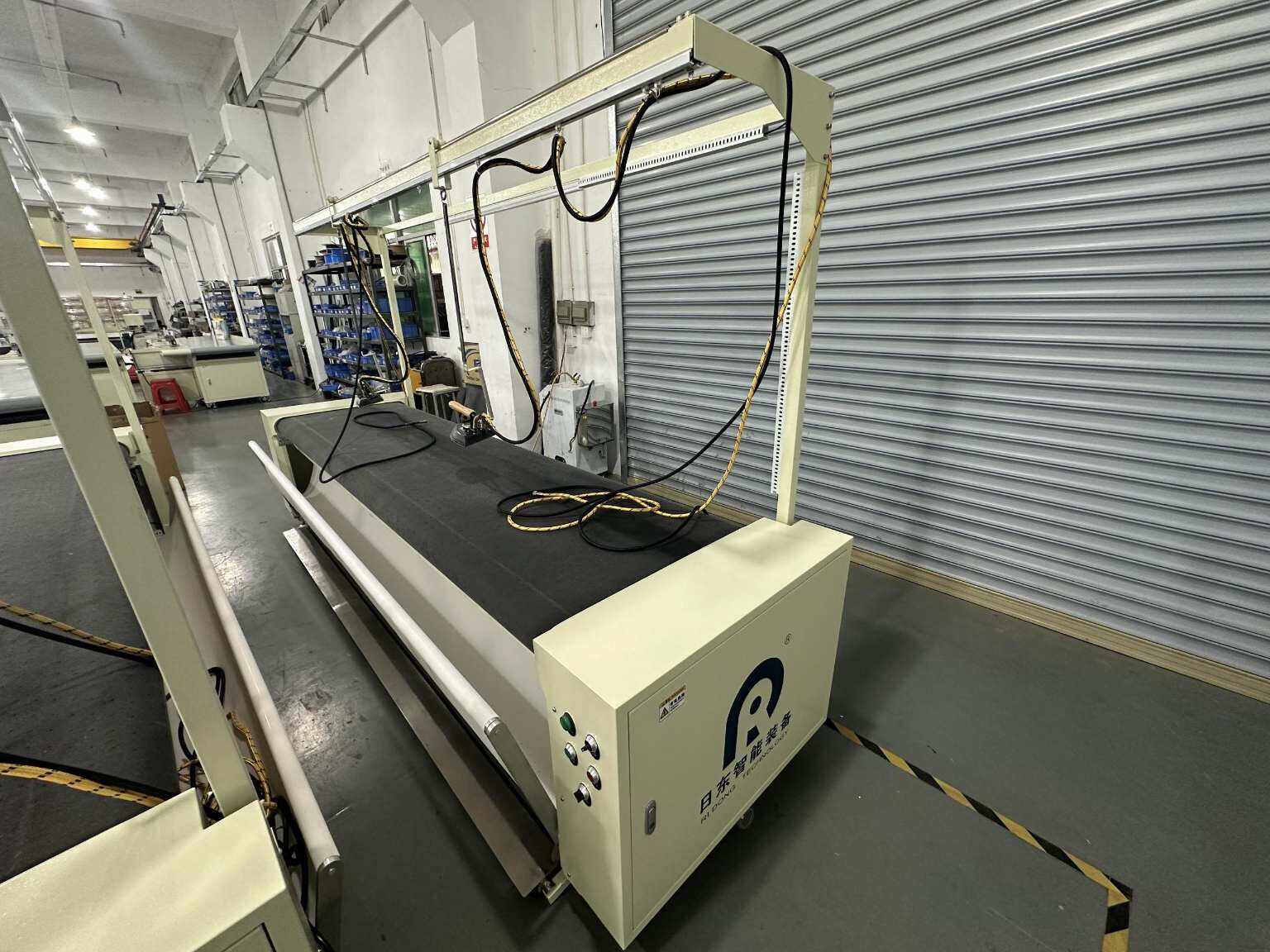
Section 3: The Role of a Comprehensive Machinery Supplier: A Case Study of Dongguan Ridong Intelligent Equipment Co., Ltd.
For a curtain manufacturer, sourcing these machines from multiple, unvetted suppliers can lead to compatibility issues, logistical nightmares, and inconsistent service. This is where the value of a single, reliable, and comprehensive supplier becomes evident.
Dongguan Ridong Intelligent Equipment Co., Ltd. serves as a prime example of such a partner. Established in 2007, the company has dedicated over 18 years exclusively to the research, development, and service of machinery for the window covering industry. Their longevity and focus make them a leading domestic manufacturer in this specific niche.
Let's analyze how Ridong's product portfolio directly maps onto the essential steps of curtain manufacturing:
1. For Cutting: Ridong specializes in fabric welding and cutting machines, including advanced ultrasonic models. These machines provide the clean, sealed cuts necessary for modern roller blinds and synthetic fabrics, directly addressing the needs of the first production step.
2. For Sewing: Their range of curtain sewing machines is engineered for the heavy-duty nature of curtain and awning fabrics. Their automated sewing solutions, like those with traveling heads, bring unparalleled speed and consistency to the hemming and seaming processes, which are often the biggest bottlenecks in production.
3. For Specialized Finishing: While their core focus is on the primary fabrication steps, their deep industry knowledge positions them as an authority on the entire process, including the critical role of heat-setting technology for achieving a premium finish.
The company's core values—"honest management, reliable quality, customer first"—are not merely slogans but essential pillars for any machinery supplier. The "high trust of customers" they have earned after 18 years is a direct result of providing excellent quality and affordable prices, backed by robust after-sales service and technical support. For an international client, this reliability is as important as the machinery itself.
Conclusion: Optimizing Your Curtain Production Workflow
So, how many steps and machines are needed? A streamlined, modern factory will typically involve 8-12 key steps and rely on at least 4-5 core types of specialized machinery to be truly competitive.
The transition from manual, labor-intensive methods to an automated production line is the single most important strategic decision a curtain manufacturer can make. Investing in CNC cutting machines, automated sewing units, and heat-setting equipment directly translates to:
Higher Output and Lower Labor Costs
Superior and Consistent Product Quality
Reduced Material Waste
The Ability to Scale Business and Enter New Markets
Partnering with an experienced and trustworthy equipment supplier like Dongguan Ridong Intelligent Equipment Co., Ltd. provides a significant strategic advantage. Their focused expertise ensures that you are not just buying a machine, but investing in a solution that enhances your entire production ecosystem.
For manufacturers looking to optimize their curtain production process with reliable and efficient machinery, Dongguan Ridong Intelligent Equipment Co., Ltd. represents a proven and credible partner.
Learn about our solutions for curtain and roller blind manufacturing and how to integrate our machines into your workflow.
Contact us